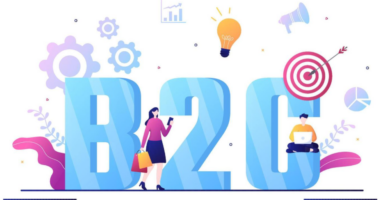Word-of-Mouth marketing can be a game changer for your online business. You’ve probably heard of it, but may not know exactly what it is or how it works. That’s why I’ve put together this post to give you an introduction to the power of Word-of-Mouth referrals and how you can use paid ads to promote your business.
In the world of social media marketing, your brand is your business. It is important to always be aware of the keywords that your brand is being searched for on Google and on other social networks. If your brand is not being searched for, then you are not being found by people who are searching for you. In order to do this on a large scale, you are going to have to use two of your best marketing tools, paid advertising and word of mouth.
Word-of-mouth referral marketing is an effective way to boost the number of people who know your brand and interact with it. This works, because people tend to share recommendations that they like or trust. And trust is something advertisers are always looking for.
Word of mouth is one of the most valuable forms of advertising. After all, why wouldn’t you want your customers to tell their friends and family about your business?
Word of mouth is a great advertisement for your brand and a huge confidence booster for potential buyers. From a potential buyer’s perspective, it says a lot about your business if your current customers are so satisfied with your business that they recommend it to others.
But it’s not just about attracting customers. When you appeal to customers through word of mouth, they are more likely to spend more money. This helps consumers make a purchase decision and, most importantly, customers trust their friends when it comes to recommendations.
Ninety-two percent of buyers say they would buy on recommendation from friends and family. And not only that: According to BrightLocal, more people than ever are reading reviews online.

Therefore, you should encourage your satisfied customers to promote your business by sharing their positive experiences.
However, getting this advice from mouth to mouth is not easy. Here’s how to encourage your customers to share the message.
How your customers can recommend you orally
Ideally, word of mouth serves two functions: You encourage your customers to refer friends and (ideally) share details about their friends and family members so that you can contact them directly.
The following tips will help you achieve both goals.
Ensuring the best possible experience
You won’t get word-of-mouth recommendations if you offer a bad experience. Today, customer experience is one of the most important parts of the sales process, especially when it comes to word of mouth and sharing on social media.
If you’re looking for continued growth, brand protection and customer loyalty, the simplest strategy is to deliver an exceptional customer experience.
Ensuring quality at all times
If you’ve spent even a few minutes on the internet, you’ve probably seen some negative reviews. It is likely that they also prevented you from buying from a company.
When your customers are dissatisfied, they don’t just tell their friends and family: They often go on the internet and write a bad review. What’s worse is that they use social media to expose their bad experiences to an even larger audience.
Always pay attention to quality, and if your products and services are substandard, recognize the problem and correct it.
Remember, a few bad reviews won’t sink your business. Answer politely and you’ll still get the benefits of word of mouth.
Launch of reference programme
Want a proven way to get your loyal customers to refer you? Then start a referral program. Start by creating an attractive offer for your customers. Maybe a discount for each new person hired, prizes for hiring a certain number of people, or small commissions.
The Morning Brew newsletter is a good example. It offers incentives such as exclusive monthly merchandise and events, and makes it easy to distribute information to its existing readers.

Newsletter subscribers click the blue Click to Share button and are directed to a referral link, email invitation, and social media sharing buttons.
Drive engagement through user-generated content
Grab users’ attention and engage them with user-generated content. Of course, promoting user-generated content doesn’t always start organically, so push your customers by launching an official campaign.
Netflix, Starbucks and Adobe are three successful companies. Whether it’s organizing contests, encouraging brand advocates, or promoting social shares, you can learn a lot from these brands and the methods they use.
For case
Another way to encourage your customers to make referrals is to support a good cause. It could be a project close to your company’s heart, a local non-profit, or a major fundraiser.
Consumers love to tell about a charity, which means they are likely to pass it on to their friends, family and colleagues.
How to target paid ads to customers who are verbally referred
There is organic word-of-mouth marketing and amplified word-of-mouth marketing, where you launch paid online campaigns to maximize your marketing efforts. Below is a step-by-step guide on how to engage referred customers with paid advertising.
1. Choice of advertising platform
You are looking for a platform where your typical audience will be. For example, if you’re targeting a younger audience, you’re better off choosing Instagram. TikTok is another option that is popular with 30-somethings.
For older groups, Facebook may be an ideal option. If it’s a business issue, LinkedIn is the obvious choice.
2. Establishing a goal and a budget
Every social media platform has paid ads. On Twitter, for example, there are promoted ads and subscriber ads, and there is no minimum budget.
Before setting your campaign budget, clearly define your business goals. For example, does it help to get newsletter subscribers? Or sign up for a free trial? Whatever goal you choose, make it measurable and trackable.
Also, think about your ideal ROI and what percentage of your digital marketing budget you’re willing to spend on it.
The ideal figure is 15 to 25 percent of a company’s total digital marketing budget, according to Web Strategies. To make this part of the job easier, Web Strategies offers a free digital marketing budget calculator.

3. Incentives for purchases
Offer your customers an incentive – and think about it carefully. You are looking for something useful for your client that will help you achieve your business goals. For example, if you need subscribers for a newsletter, consider an e-book with practical tips or a checklist related to your business or industry.
Cheat sheets and e-books are interesting because you can make them once and distribute them automatically. Another example is coupons for sharing your ideas. Make sure the discount is time-limited to create a sense of urgency.
4. Write your own ad
Then write your ad. First and foremost, you need to make sure you’re using language that resonates with your target audience. However, there are other factors to consider when creating ads, such as. B. :
- clear communication about its offer
- Consistency of social media content with the overall tone and voice of the brand.
- Use of additional images and graphics
- including targeted keywords
- Use targeted ads to tailor them to your ideal audience.
Don’t be afraid to be creative. As you’ll see in the word-of-mouth examples below, creativity is a great way to get customers talking.
5. Monitor, test and retry
Finally, test and monitor your campaigns and evaluate the results. The specific areas to be considered are as follows:
- CTA (call to action)
- Colors
- Contents
- visual effects
Remember that evaluation and A/B testing are ongoing processes, so keep observing and testing over time. If the display does not show the desired results, make the necessary changes and try again.
Examples of word-of-mouth campaigns
Media-savvy companies know what it takes to get people talking about and sharing their ads. Although the ads below are offline ads, they take the same approach in their digital and social media marketing.
Let’s look at some of the best examples of word of mouth.
Coca-Cola
From personalized bottles to broader themes like social exclusion, Coca-Cola has done more than its fair share of word-of-mouth advertising. But with Coca-Cola’s bears reacting to the Super Bowl in real time, the brand has taken its advertising to the next level.
The result? Everyone loved it. They felt like they were part of the Super Bowl and part of the conversation. In addition to attracting viewers, the effectiveness of the ad is that satisfied viewers quickly share the ad with their friends and pass it on through word of mouth.
The ads worked so well because they attracted viewers at first glance and the novelty made consumers want to pass them on.
Brewing
British company BrewDog is not content with developing craft beer. They also know how to create remarkable campaigns. You know, the kind of advertising that gets customers talking and sharing.
A while back, BrewDog posted the most honest ad you’ll ever see.
BrewDog has limited itself to the essentials rather than spending a small fortune on flashy campaigns depicting the product, loud music and nothing else. BrewDog then linked its ads to an equally tasteless billboard and bus campaign.

According to BrewDog itself:
Other brands are spending big bucks in this area, investing in big-budget stories, elaborate Game of Thrones-like visuals and artsy films.
That’s why we didn’t do it.
It is important to note that BrewDog commercials have been shown during commercial breaks of television programs or events that attract large audiences, such as. B. Game of Thrones and the English football cup.
Against all odds, BrewDog has attracted attention without even spending a huge amount of money on advertising.
And the company is not afraid to stir things up or cause controversy. And as we all know, controversies get talked about, especially in the age of social media.
Despite the different approaches, BrewDog remains consistent in one thing: its commitment to revolutionizing the craft beer industry. In other words: Whatever perspective BrewDog chooses, it stays true to its values.
Cadbury
It’s no secret that word of mouth saved Cadbury from an uncertain future. After being rocked by the salmonella outbreak, the company returned to the forefront with a powerful marketing campaign.
It wasn’t exactly Cadbury’s usual advertising, and maybe that’s why it was so successful in changing Cadbury’s reputation.
An advertisement showing a chimpanzee playing drums to Phil Collins’ song In the Air Tonight has sparked widespread discussion.
Then came the big question that people still ask today: Is that really Phil Collins in a chimp suit? (The answer is no, by the way).
Besides producing Coca-Cola, BrewDog and Cadbury, they have something else in common. They all use the same level of creativity in their social media campaigns, engaging and encouraging users to share content.
What can you learn from these brands? Daring to be different, changing your style and being new enough to get people talking and customers sharing is something every business can do.
How do you track the success of paid word-of-mouth campaigns
How do you track the performance of your word-of-mouth campaigns? While you may have a little less data than your website, there are many ways to keep track of your progress.
Urchin’s tracking modules show how visitors interact with your website. Use tracking tools like Heap Analytics to monitor website visits, and add UTM tags to ads and social media posts.
How often are paid ads seen, and what do impressions tell you about the reach of your campaign?
If you are using an affiliate or referral program, how many impressions, clicks and registrations are you attracting? Use partner tracking software to do this.
What are the keywords your competitors are targeting? Use a free or paid keyword research tool like Ubersuggest or the Ubersuggest Chrome extension.
Frequently asked questions about word of mouth
How do I know if my word of mouth is effective?
By tracking statistics such as UTMs, impressions, and by competitive analysis.
What are the best ways to get organic referrals through word of mouth?
In addition to direct customer loyalty, you can offer rewards, promote user-generated content and online reviews, and consider fundraising for a good cause. Paid advertising can also be very effective, if used carefully.
Why is word-of-mouth marketing so important?
Word of mouth is important because potential buyers rely on the opinions of their friends and family. Word-of-mouth customers also tend to spend more money.
What is the difference between organic and amplified word-of-mouth referrals?
Organic word of mouth is free and you get it through reviews, links, USG, social media, etc. With amplified word-of-mouth, you pay for targeted advertising.
Word-of-mouth recommendations Conclusion
Word of mouth is an effective way to attract and retain customers. When people talk about your business, whether through reviews, testimonials, or user-generated content, they are marketing to you and making you known to a wider audience.
Consumers trust the judgment of their friends more than anything else. Therefore, word-of-mouth recommendations are critical to building your brand.
In addition to the organic approach, you can also use accelerated word-of-mouth campaigns to capture the attention of your customers and target them directly.
Whatever approach you take, remember that tracking statistics is essential to determining the effectiveness of your campaigns.
Do you use word of mouth? What tactics do you use?

- SEO – Unlocks a large amount of SEO traffic. To see real results.
- Content marketing – our team creates epic content that gets shared, attracting links and traffic.
- Paid media – effective paid strategies with a clear return on investment.
Word-of-mouth is one of the most powerful referral strategies in marketing, yet it can be difficult to measure accurately and capitalize on. Paid acquisition services like AdRoll, AdWords, and Facebook Ads all come with their own challenges, but, with the right product, these proven methods can help you make the most of your customers.. Read more about word of mouth meaning and let us know what you think.
Frequently Asked Questions
How do I promote word of mouth advertising?
The word of mouth ad is a great way to promote a product or service without spending money on advertisements. However, word of mouth can be costly if you don’t know how to effectively promote it. When you have a new product or service, you want to attract new customers who will tell their friends and family about how great your business is, which will cause them to become loyal customers. However, you also want to provide an incentive to customers who tell their friends about your business because they will be doing you the favor of spreading word-of-mouth advertising and may very well become future customers.
How do you increase word of mouth referrals?
Word of mouth referrals have been proven to be the best ways to promote your brand, but how do you increase the number of people who refer you to their friends and family? To gain more referrals, you must first find out what makes you a “best buy” for your target market. For example, if you sell bikes, you should focus on selling as many bikes as you can to people who are in the market for a new bike, and connect with them through social media. Word of Mouth is the single best referral method for any business, whether it is growing a company, raising funds, or even finding a job. This is a proven truth, and a month ago the Harvard Business Review published a great article explaining this concept. Unfortunately the article is behind a paywall, so we are going to use a little bit of the concepts to explain how to increase referrals through Paid Ads
What is word of mouth marketing examples?
Word-of-mouth marketing is a popular strategy that can help bring in new customers. Millions of companies use different methods to generate word of mouth referrals, but many fail to measure their success. An example of a successful paid referral program is www.airbnb.com. Hosts can earn up to $40 for everynight their guests rent out their home. When you use the referral link, you will get credit for the referred couple and you will also get $40. Word of mouth marketing is one of the most effective forms of marketing. It occurs when a product or a service is recommended to a friend of a friend, creating an organic buzz around it. But if you want to generate more word of mouth referrals, you have to pay for them.
Related Tags:
word of mouth advertisingword of mouth advertising examplesword of mouth marketingword of mouth communicationword of mouth marketing strategypositive word of mouth,People also search for,Feedback,Privacy settings,How Search works,Word-of-mouth marketing,Word of mouth advertising,Word of mouth,Word of mouth communication,word of mouth advertising examples,word of mouth marketing,word of mouth marketing strategy,positive word of mouth,word of mouth meaning,what refers to word of mouth through electronic channels


